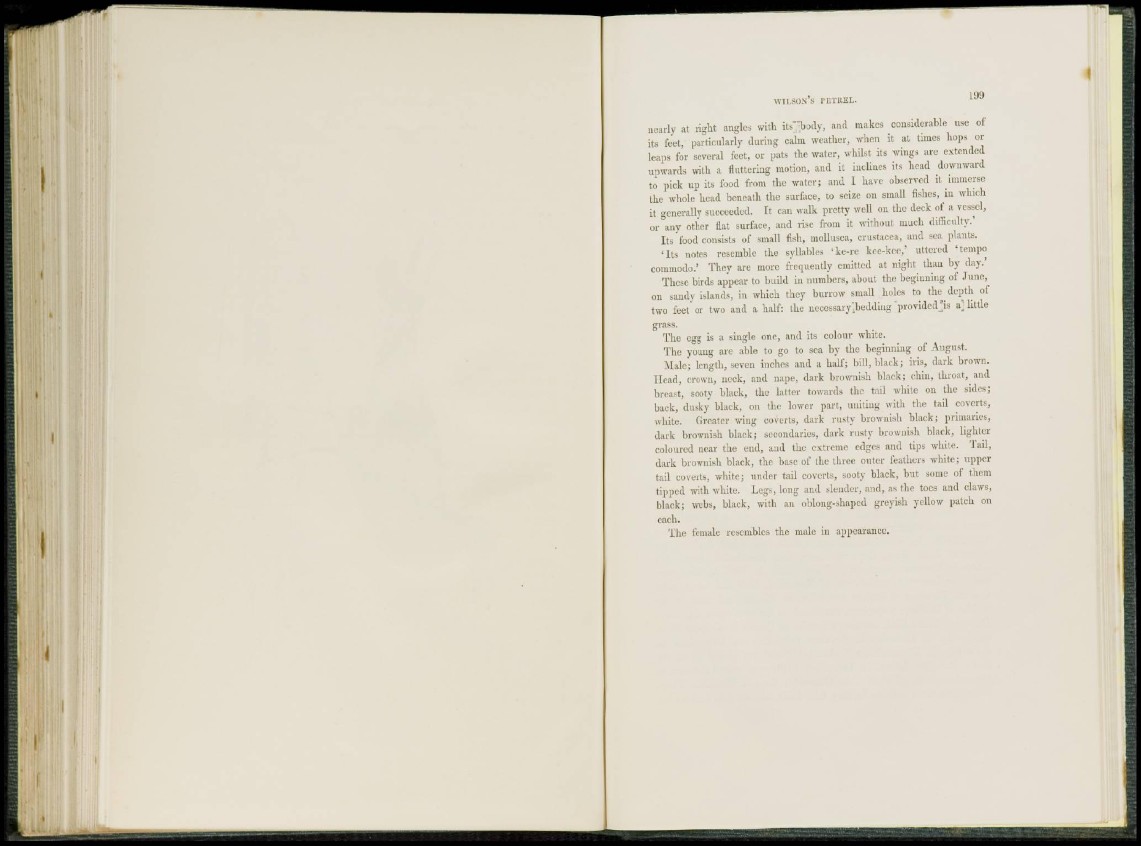
WILSON'S TETUEL. 199
nearly at right angles with its~"body, and makes considerable use of
its feet, particularly during calm weather, when it at times hops or
leaps for several feet, or pats the water, whilst its wings are extended
upwards with a fluttering motion, and it inclines its head downward
to pick up its food from the water; and I have observed it immerse
the whole head beneath the surface, to seize on small fishes, in which
it generally succeeded. It can walk pretty well on the deck of a vessel,
or any other flat surface, and rise from it without much difficulty.*
Its food consists of small fish, mollusca, Crustacea, and sea plants.
' I t s notes resemble the syllables ' ke-rc kce-kee,' uttered ' tempo
coinmodo.' They arc more frequently emitted at night than by day.'
These birds appear to build in numbers, about the beginning of June,
on sandy islands, in which they burrow small holes to the depth of
two feet or two and a half: the necessary^bedding provided ""is- aMittle
grass.
The egg is a single one, and its colour white.
The young arc able to go to sea by the beginning of August.
Male; length, seven inches and a half; bill, black; iris, dark brown.
Head, crown, neck, and nape, dark brownish black; chin, throat, and
breast, sooty black, the latter towards the tail white on the sides;
back, dusky black, on the lower part, uniting with the tail coverts,
white. Greater wing coverts, dark rusty brownish black; primaries,
dark brownish black; secondaries, dark rusty brownish black, lighter
coloured near the end, and the extreme edges ami tips while. Tail,
dark brownish black, the base of the three outer feathers white; upper
tail coverts, white; under tail coverts, sooty black, but some of them
tipped with white. Legs, long and slender, and, as the toes and claws,
black; webs, black, with an oblong-shaped greyish yellow patch on
each.
The female resembles the male in appearance.